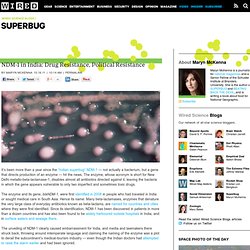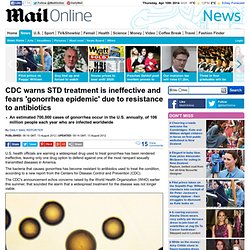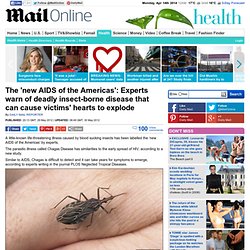

Virus. Microbes. Epigenetics 101 — part 2: cancer, chaos and chemo. There are many different types of cell in the body.

With very few exceptions, our cells contain identical DNA, but have different levels of activity of each of the genes encoded in that DNA. A gene that’s switched on at low levels in the intestine might be highly active in the brain and completely silent in the liver. Epigenetic marks (chemical modifications of the DNA or of the histone proteins that bind it — see part 1) help to set and maintain the appropriate levels of gene activity for each cell. Histone modifications are very dynamic, allowing for rapid changes to the activity of specific genes in response to outside stimuli; in contrast DNA modifications, primarily a mark called DNA methylation, are much more stable. The epigenetic mechanisms that regulate both kinds of marks are like cogs in a well-oiled machine, working together with other parts of the cellular apparatus to keep everything running smoothly.
Lost genes may explain the origin of the Black Death. About 6,000 years ago, a bacterium underwent a few genetic changes.

These allowed it to expand its habitat from the guts of mice to that of fleas. Such changes happen all the time, but in this particular instance the transformation eventually resulted in the Black Death. It wiped out a third of Europe’s population in the 14th century. Yersinia pestis (YP), which causes the plague, evolved from an ancestral bacteria called Yersinia pseudotuberculosis (YPT). This happened somewhere in China, from where it spread westward causing disease in both animals and humans. IBM reveals nanotech gel that can 'explode' superbugs.
Firm says breakthrough could replace antibiotics'hydrogel' could be used for creams, coating for medical instruments and injections into infections woundsIt can disrupt the membrane of bacterial cells, causing them to 'explode' By Mark Prigg Published: 13:14 GMT, 25 January 2013 | Updated: 13:29 GMT, 25 January 2013 IBM has revealed a hi-tech gel that could obliterate hospital superbugs.

The computer firm hopes its breakthrough could replace antibiotics. The new antimicrobial 'hydrogel' could be used for creams, coating for medical instruments and injections into infections wounds. Scroll down for video. Crazy Way Microbes Colonize, Control The Human Body. NDM-1 in India: Drug Resistance, Political Resistance. It’s been more than a year since the “Indian superbug” NDM-1 — not actually a bacterium, but a gene that directs production of an enzyme — hit the news.

CDC warns STD treatment is ineffective and fears looming ¿gonorrhea epidemic¿ due to resistance to antibiotics. An estimated 700,000 cases of gonorrhea occur in the U.S. annually, of 106 million people each year who are infected worldwide By Daily Mail Reporter Published: 06:16 GMT, 13 August 2012 | Updated: 09:14 GMT, 13 August 2012 U.S. health officials are warning a widespread drug used to treat gonorrhea has been rendered ineffective, leaving only one drug option to defend against one of the most rampant sexually transmitted diseases in America.

Robin Cook, author of Outbreak on a catastrophe of global proportions. Sometimes fiction can do more to change public opinion than nonfiction.

It took Upton Sinclair's 1906 novel, The Jungle, to awaken the public to the dangers of sausage and the meat-packing industry in general. Resistant Gonorrhea: CDC Says Just One Drug Left. Well, that didn’t take long.

Exactly 6 months after warning, in a major medical journal, that gonorrhea was becoming untreatable by the last two drugs commonly used against it, the Centers for Disease Control has taken one of those drugs off the table, leaving just one antibiotic available to treat the disease. In a bulletin published today, the public health agency says that data from the national Gonococcal Isolate Surveillance Project shows a high enough percentage of resistance to the oral cephalosporin cefixime that “CDC no longer recommends cefixime at any dose as a first-line regimen for treatment of gonococcal infections.” Instead, it says, physicians should administer a single dose of injectable ceftriaxone, accompanied by some additional oral drugs.
This has been coming for a while, but it is still unnerving news. Forget bird flu, seal flu could prove more deadly to humans. The H3N8 strain was discovered after the death of 162 New England sealsThe virus could target a protein found in human lungs causing immune system to go into overdrive and attack itselfThis would leave lungs vulnerable to pneumonia and bacterial infections By Daily Mail Reporter Published: 08:43 GMT, 31 July 2012 | Updated: 14:22 GMT, 31 July 2012 Seal flu could pose a new threat to human health, scientists have warned.

A new flu virus identified in American harbour seals has the potential to pass to other mammals, including humans, say experts. The H3N8 strain was discovered after the death of 162 New England harbour seals last year. Post-mortem examinations of five of the animals showed they were killed by a flu infection. New threat: Flu killed more than 100 harbour seals in New England recently The strain is closely related to one that has been circulating in North American birds since 2002.
It has also evolved mutations known to ease transmission and cause more severe symptoms. How Darwin can fight cancer. Laurie Garrett on studying pandemics: Dual uses for avian flu research. Researches upon "spurious vaccination" : or the abnormal phenomena accompanying and following vaccination in the Confederate army, during the recent American Civil War, 1861-1865.
Chagas disease: 'New AIDS of the Americas' can cause victims' hearts to explode. By Daily Mail Reporter Published: 20:13 GMT, 29 May 2012 | Updated: 08:49 GMT, 30 May 2012 A little-known life-threatening illness caused by blood sucking insects has been labelled the ‘new AIDS of the Americas’ by experts.

The parasitic illness called Chagas Disease has similarities to the early spread of HIV, according to a new study. Similar to AIDS, Chagas is difficult to detect and it can take years for symptoms to emerge, according to experts writing in the journal PLOS Neglected Tropical Diseases. The new AIDS? An estimated 10 million people worldwide are infected with most sufferers in Bolivia, Mexico, Columbia and Central America, as well as approximately 30,000 people in the U.S., reported the New York Times. The disease - once largely contained to Latin America - has spread into the U.S due to increases in travel and immigration. Like AIDS, the illness is difficult to detect and has a long remission period. It spreads easily through blood transfusions and from mother to child. The World's Most Celebrated Virus Hunter: Ian Lipkin. When Ian Lipkin chose a career in infectious diseases, he envisioned hunting for pathogens in daring treks around the world.

Though disappointed to learn that modern-day virus hunters work largely from the lab, he still wound up a pioneer. A Hidden Universe that would Reach Out 100 Million Light Years. In the invisible, parallel world of Earth's they kill half the bacteria in the ocean every day, and invade a microbe host 10 trillion times a second around the world. There are 10 billion trillion, trillion viruses inhabiting Planet Earth, which is more stars than are in the Universe -- stacked end to end, they would reach out 100 million light years.
Over tens, hundreds and millions years, our ancestors have been picking up retroviruses (HIV is a retrovirus) that reproduce by taking their genetic material and inserting it into our own chromosomes. There are probably about 100,000 elements in the human genome that you can trace to a virus ancestor. When Superbugs Attack. Some of modern medicine's most heralded interventions -- from routine surgeries to organ transplants and cancer treatments -- may soon be too dangerous. The viability of these procedures hinges on physicians' ability to use antibiotics to swiftly vanquish any bacterial infections that might arise in the course of treatment. For decades, physicians have been able to choose from hundreds of different kinds of antibiotics to do the job, including many powerful "broad spectrum" varieties that indiscriminately kill a wide range of bacteria.
But over the past two decades, antibiotic drugs have started to fail one by one, as bacteria with resistance to them have emerged and spread. Taming the new drug-resistant pathogens requires ever more toxic, expensive, and time-consuming therapies, such as a class of last-resort antibiotics called carbapenems, which must be administered intravenously in hospitals.